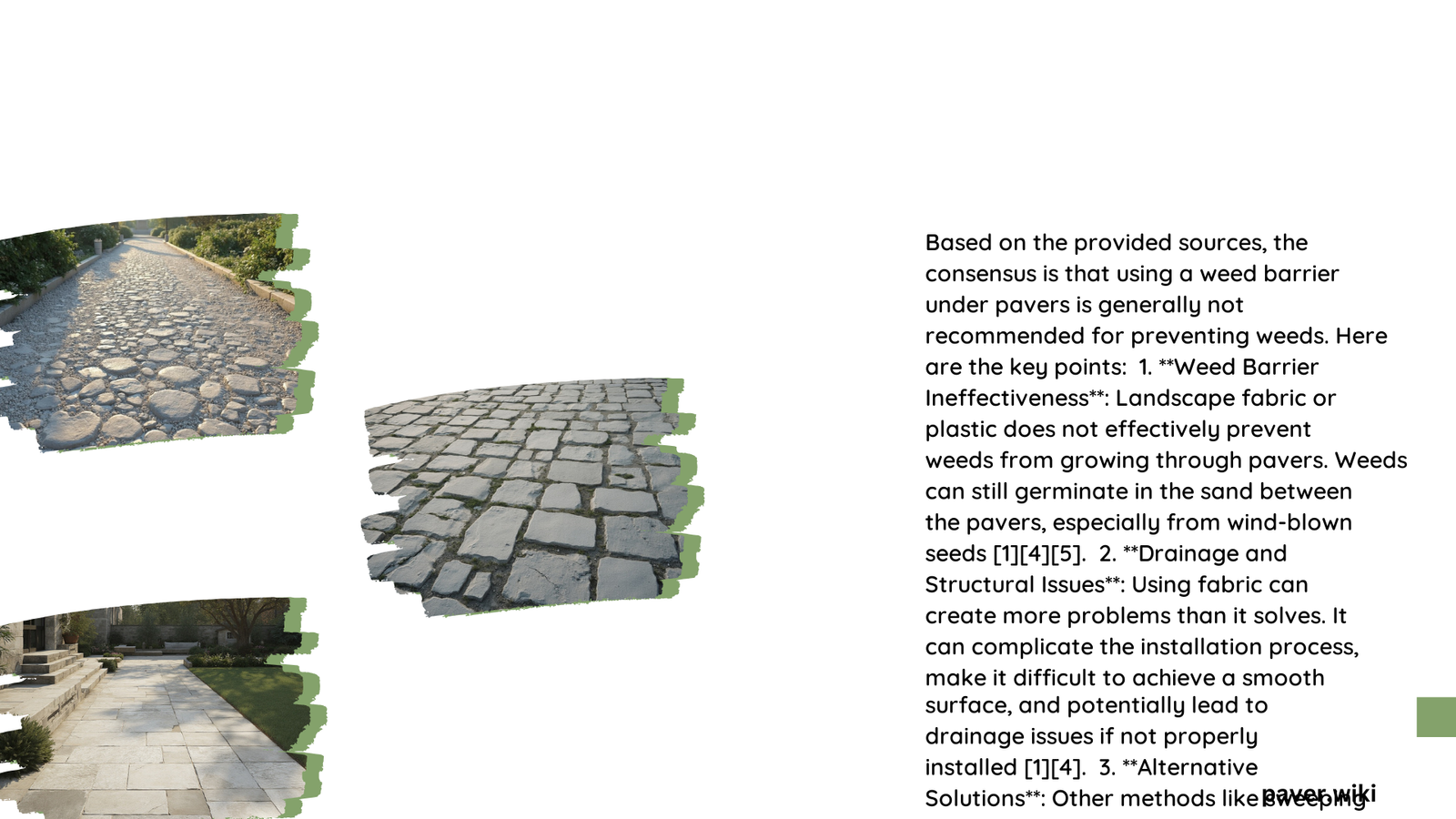The decision to put a weed barrier under pavers is a common dilemma for homeowners and landscapers. While weed barriers can provide benefits such as weed prevention and moisture retention, they also come with drawbacks like potential soil health issues and long-term maintenance challenges. This article explores the pros and cons of using weed barriers under pavers, helping you make an informed decision for your landscaping project.
What Are the Benefits of Using Weed Barrier Under Pavers?
Using a weed barrier under pavers can offer several advantages:
-
Weed Prevention: A high-quality weed barrier can significantly reduce weed growth, especially in the initial years after installation. Some studies suggest that weed barriers can reduce weed growth by up to 90% in the first few years.
-
Moisture Retention: Commercial weed barriers are designed to be permeable, allowing water to drain through while helping to maintain soil moisture. This can be beneficial for plant health and water conservation.
-
Soil Stability: Weed barriers can help prevent soil erosion and maintain the stability of the paver installation, particularly in areas with loose or sandy soil.
What Are the Drawbacks of Using Weed Barrier Under Pavers?

Despite the benefits, there are several potential drawbacks to consider:
-
Soil Health Impact: Weed barriers can hinder beneficial insects and earthworms from accessing the soil surface, potentially impacting soil aeration and nutrient cycling over time.
-
Weed Growth Through Fabric: As soil and organic matter accumulate on top of the fabric, weeds can still grow through it. This can make weed removal more difficult and messy.
-
Material Lifespan: While high-quality weed barriers can last for several years (e.g., up to 7 years with proper care), they are not biodegradable and can remain in the soil for many years, potentially causing long-term issues.
-
Installation Challenges: Proper installation of weed barriers can be time-consuming and requires careful attention to detail to ensure effectiveness.
What Types of Weed Barriers Are Available for Use Under Pavers?
There are several types of weed barriers suitable for use under pavers:
- Fabric Weed Barriers: These are the most common type and come in various qualities and thicknesses.
- Example: Pro-5 Weed-Barrier (commercial-grade, heavy-duty)
- Permeability: Designed to allow water drainage
- Thickness: Varies, but heavier fabrics offer better protection
-
Cost: $0.50 to $1.50 per square foot for high-quality options
-
Plastic Weed Barriers: Less common for paver installations due to drainage concerns.
-
Biodegradable Weed Barriers: Eco-friendly options that break down over time, but may not provide long-term protection.
How Much Material Is Needed for Weed Barrier Installation Under Pavers?
For a 100 square foot area, you would typically need:
- Weed Barrier Fabric: Approximately 100 square feet (accounting for some overlap)
- Landscape Pins: 20-30 pins for secure installation
- Mulch or Gravel: If using, calculate based on desired depth (e.g., 2-3 inches)
Estimated Costs and Labor:
– Material Cost: $50 to $150 for high-quality fabric (100 sq ft)
– Labor Hours: 2-4 hours for installation (100 sq ft area)
How Does Weed Barrier Affect Drainage and Soil Erosion Under Pavers?
Weed barriers can impact drainage and soil erosion in the following ways:
- Drainage:
- Designed to be permeable, allowing water to pass through
- Can impede water flow if clogged with debris or if incorrect mulch is used
-
No specific data on water flow rates, but generally allows adequate drainage
-
Soil Erosion and Paver Stability:
- Initially helps prevent soil erosion
- Over time, soil accumulation on top of the barrier can lead to weed growth and potential paver instability
- May increase long-term maintenance requirements
What Are the Long-Term Considerations for Using Weed Barrier Under Pavers?
When deciding whether to use weed barrier under pavers, consider these long-term factors:
-
Maintenance: Regular inspection and maintenance may be required to address weed growth and ensure paver stability.
-
Replacement: High-quality barriers may need replacement after 5-7 years, which can be labor-intensive.
-
Soil Health: Long-term use may impact soil health and beneficial organism activity.
-
Environmental Impact: Non-biodegradable barriers can remain in the soil for many years.
Conclusion: Should You Put Weed Barrier Under Pavers?
The decision to use weed barrier under pavers depends on various factors including your specific landscape needs, soil type, and long-term maintenance preferences. While weed barriers can provide initial benefits in weed prevention and soil stability, they also come with potential long-term drawbacks. Consider alternatives such as proper base preparation and regular maintenance, which may be more sustainable in the long run. Ultimately, the choice should be based on a careful evaluation of your specific project requirements and long-term landscaping goals.
